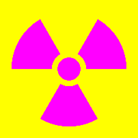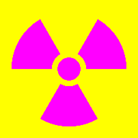| SOP Number: | EHS-SOP-RAD-504.00 |
| Effective Date: | 6/1/2024 |
| Latest Version By: | Rachel Nichols, ARSO |
| Approved By: | Cade Register, RSO |
Purpose: This procedure describes how the Radiation Safety Staff will manage exempt sources.
Scope: Permitted Individuals (PIs) should use this procedure to accurately and safely maintain exempt quantity source inventory, regardless of whether the PI has a RAM permit.
- Definitions:
Exempt Quantity – an activity limit of a radionuclide set forth in 10 CFR 30.71 Schedule B in which a person does not need an NRC license for possession and use [10 CFR 30.18(a)].
- Procedure Details:
- Exempt quantities can include items such as check sources for radiation instrument testing or teaching, some self-luminous products like timepieces and other instrument dials, some smoke detectors, items containing small amounts of thorium such as incandescent gas mantles, isogenerators used in teaching, and items containing small amounts of uranium and thorium such as geological samples or glazed ceramic tableware [10 CFR §30.15, §30.19, §30.20, §30.21].
- If a material was originally received at a higher activity and decays to below an exempt quantity limit as defined in 10 CFR 30.71 Schedule B, it does not qualify as an exempt quantity because it was not originally designed to fulfill the exempt quantity requirements.
- Similarly, this protocol does not apply to unsealed or irradiated materials which are below the exempt quantity limits.
- The NRC has determined that the exempt quantities will not constitute an unreasonable risk to public health and safety and that the risk to the public from radiation exposure is minimized when restrictions are placed on the amount of radioactive material that can be initially distributed at any one time [5.3].
- Possession of exempt quantities does not necessarily require a PI to hold a RAM permit. If a PI does possess a RAM permit, they are not required to track the exempt quantity sources as part of their RAM permit or be approved for those radionuclides.
- Exempt quantities do not have to meet the inventory requirements outlined in MU’s Radioactive Materials License, specifically condition 17 in Amendment 132 (or any subsequent amendments with a similar condition). This condition requires MU to perform a physical inventory every 6 months to account for all sealed sources and/or devices received and possessed under the license.
- The 1999 NMSS Licensee Newsletter contains an NRC Technical Policy statement regarding the treatment of exempt quantities, specifically stating that even though a specific license is possessed, such as what MU has, the licensee can continue to treat exempt material as a person exempt from licensing, provided the material is received and maintained as exempt and the specific license does not contain a condition to the contrary. [5.3] MU’s license does not contain a condition to the contrary.
- 10 CFR 20 requirements
- Even though exempt quantities are exempt from the licensing requirements as previously described, they are not exempt from other pertinent regulations, specifically those found in 10 CFR 20 [5.3, 5.4].
- Because of this, MU must still consider the public dose from exposure to exempt quantities. Therefore, it is the PI’s responsibility to ensure that the sources are stored in appropriate shielding when not in use to minimize dose [10 CFR 20.1301]. PIs should still apply the principles of ALARA when handling and storing exempt quantities; this includes time, distance, and shielding.
- The PI should still make efforts to maintain the security of the exempt sources and keep them locked when not in use.
- This part of Title 10 also requires MU to consider all exempt quantity materials as radioactive waste at the time of disposal. The PI must dispose of all exempt quantity materials through Environmental Health & Safety (EHS) and treat the waste as radioactive. These materials cannot be thrown away in the regular trash.
- Since the NRC established exempt quantity limits such that they do not present a significant radiation hazard, no individual may combine quantities of byproduct material covered under the exempt quantity limit for the purpose of producing an increased radiation level [10 CFR 30.18(e)].
- Even though the PI does not have to follow the same requirements as a PI who holds a RAM permit, the PI should still maintain an inventory of all exempt quantity sources on hand. The inventory does not have to be kept in the EHS database. Rather, the PI can use the log sheet found in Appendix A of this procedure to maintain their exempt quantity inventory. To use the log, fill out the radionuclide, assay activity (also referred to as reference activity), assay date (also referred to as reference date), serial number, and source type.
- Source type is the geometry of the source. Common examples include button, rod, or vial sources.
Knowing these five items about each source will make the disposal of the sources easier for EHS.
- References:
- 10 CFR 30
- MU NRC RML Amendment 132 (on file with EHS)
- https://www.nrc.gov/reading-rm/doc-collections/nuregs/brochures/br0117/991.html#1
- https://www.nrc.gov/docs/ML1221/ML12213A049.pdf
- Revisions
- Rev 00 – 2024-6-1
- New SOP.
- Rev 00 – 2024-6-1
Appendix A – Exempt Source Posting and Log Sheet
Permitted Individual:_____________________ Room Number:__________________________ Requirements for Exempt Sources:
Contact Radiation Safety with any questions: (573) 882-0737 or rad@missouri.edu More information can be found on the EHS Radiation Safety page: ehs.missouri.edu/program-areas/radiation-safety | ||||
| Radionuclide | Assay Activity | Assay Date | Serial Number | Source Type |
 Exempt Quantity Source Log
Exempt Quantity Source Log 